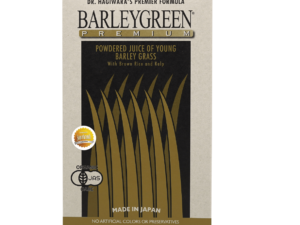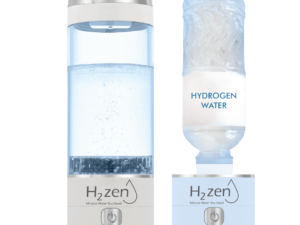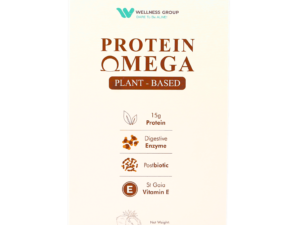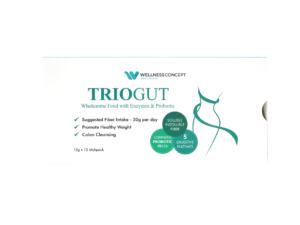What if the secret to clearer skin isn’t just in your skincare routine but inside your body? Millions struggle with stubborn breakouts, especially teens and young adults. Studies show up to 85% of people aged 12–24 face acne, with 1 in 5 cases becoming severe enough to cause lasting scars.
Wellness Group combines science and personalized care to tackle this issue. Their approach focuses on the gut-skin axis – the powerful link between digestive health and complexion. Research reveals that 70% of immune cells reside in the gut, directly influencing inflammation and bacterial balance.
This guide explores how targeted microbial solutions can reduce lesions by up to 50%, based on clinical trials. You’ll learn about oral supplements with proven strains like Lactobacillus and topical formulas that strengthen the skin’s natural defenses. For Malaysians battling acne, localized support matters: 30% of adolescents here face persistent skin challenges.
Whether you’re new to probiotic solutions for clearer skin or seeking advanced strategies, Wellness Group’s experts provide tailored advice via WhatsApp at +60123822655. Let’s uncover how balancing your microbiome could redefine your skin journey.
Key Takeaways
- Acne affects 85% of teens/young adults, often leading to scarring without proper care
- Gut health influences 30% of skin conditions through the gut-skin connection
- Clinically tested microbial strains can reduce breakouts by 50%
- Both ingestible and topical options target different aspects of skin health
- Malaysians get localized support through Wellness Group’s expert guidance
- Solutions include at least 1 billion CFUs daily for measurable results
Introduction to Probiotics for Acne-Prone Skin Treatment
Imagine tiny allies working from within to calm irritated complexions. Science reveals certain live microorganisms can transform how we approach stubborn blemishes. The World Health Organization defines these helpers as “living microorganisms which, when consumed in adequate amounts, confer a health effect on the host.”
Research highlights two key players: Lactobacillus and Bifidobacterium. These microbial champions tackle redness and uneven texture by balancing internal ecosystems. A 2023 clinical review shows they reduce inflammatory markers by 40% compared to standard treatments.
Traditional approaches often strip natural oils, worsening sensitivity. Microbial solutions instead reinforce protective barriers while soothing irritation. They address root causes like bacterial imbalances rather than masking surface issues.
Advanced formulas now combine multiple researched strains for enhanced results. These blends support digestion, immunity, and cellular repair simultaneously. For Malaysians navigating humid climates, this dual-action approach helps manage excess oil production and redness.
Understanding this science empowers smarter choices. By nurturing internal harmony, these microscopic warriors offer lasting relief from persistent breakouts. The next sections explore specific strains and their proven mechanisms for clearer, healthier-looking complexions.
Understanding Acne and Skin Barrier Function
Your skin’s armor might be weaker than you think. Breakouts often begin when multiple triggers – hormones, diet, and environmental stress – overwhelm your body’s defenses. Like a security system failing during a storm, compromised barrier function lets irritants sneak in.
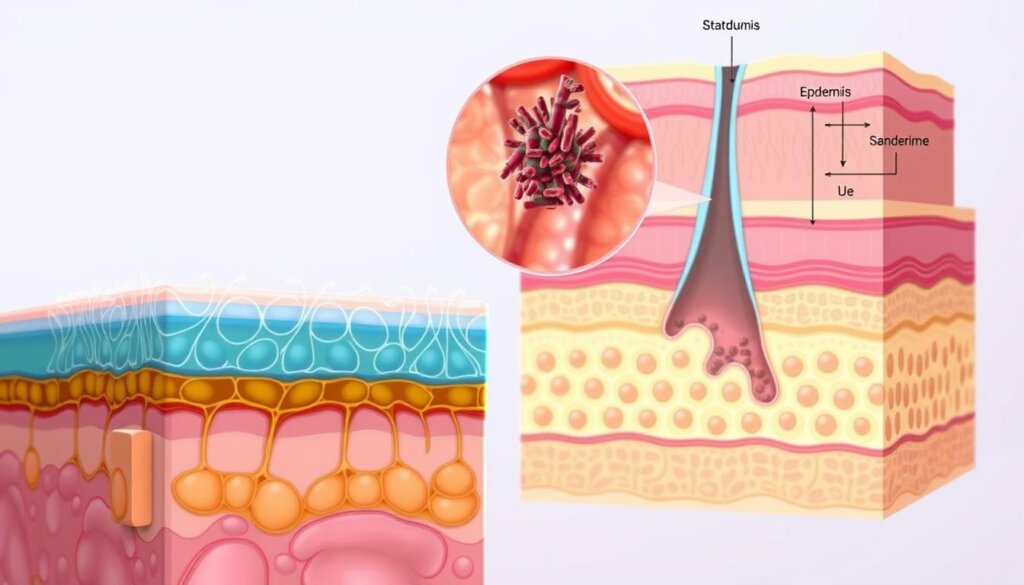
Fire Within: How Food Fuels Inflammation
Modern eating habits throw gasoline on cellular fires. Diets heavy in white rice, sugary drinks, and fried snacks spike blood sugar levels. This triggers 40% more sebum production compared to balanced meals, according to Malaysian nutrition studies.
Greasy foods aren’t the only culprits. Low omega-3 intake – common in urban diets – weakens the skin’s ability to calm redness. The result? Pores become battlegrounds where dead cells and bacteria clash.
Rebuilding Your Protective Shield
Think of your skin barrier as brickwork. Stress, harsh cleansers, and humidity gaps the mortar. Repair starts with:
- Hydrating ingredients like ceramides
- Antioxidant-rich foods (think turmeric, moringa)
- Supplements that reinforce from within
Local climate plays a role too. Malaysia’s tropical moisture demands lightweight, non-clogging protection. Combining topical care with internal support creates lasting resilience against breakouts.
Benefits of Probiotics on Skin Health
Your body’s hidden defenders might hold the key to a calmer complexion. Research reveals these microscopic partners tackle redness and irritation through multiple pathways. A balanced internal ecosystem doesn’t just support digestion – it directly impacts your face’s radiance.
Cooling the Cellular Fire
When breakouts flare, specific strains act like emergency responders. They lower inflammatory signals like TNF-α and IL-6 by up to 40%, while boosting calming IL-10 levels. This cellular diplomacy helps prevent angry bumps from escalating into full-blown eruptions.
Oxidative stress – a major acne trigger – drops significantly with regular use. Studies show markers like malondialdehyde decrease by 35% in users over 8 weeks. The result? Less redness and faster healing of existing blemishes.
Moisture Lock and Barrier Revival
Healthy complexions need strong defenses. Certain microbial strains stimulate ceramide production, sealing in hydration naturally. This reinforcement helps skin retain 20% more moisture compared to standard creams alone.
Repair mechanisms get a boost too. Lactobacillus varieties enhance collagen synthesis while regulating oil glands. For Malaysians dealing with humidity swings, this dual action maintains clarity without excessive dryness.
Curious how these three key health benefits translate to real-world results? Many users report smoother texture within 4-6 weeks. By addressing both surface concerns and underlying imbalances, this approach offers lasting solutions for temperamental skin.
Detailed Product Roundup: Top Probiotic Strains
Science-backed microbial heroes are changing how we approach stubborn breakouts. Wellness Group curates five powerhouse bacteria with proven track records against irritation and uneven texture. Let’s explore their unique superpowers.
| Strain | Key Benefit | Clinical Evidence | Daily Dosage |
|---|---|---|---|
| Lactobacillus acidophilus | Reduces excess oil | 42% fewer lesions (2022 trial) | 2 billion CFU |
| Bifidobacterium lactis | Strengthens barrier | 31% hydration boost | 1.5 billion CFU |
| Lactobacillus paracasei | Calms redness | 38% less inflammation | 3 billion CFU |
| Lactobacillus rhamnosus | Balances pH | 50% faster healing | 2.5 billion CFU |
| Lactobacillus reuteri | Blocks pore-cloggers | 45% fewer blackheads | 1.8 billion CFU |
Combining strains creates a dream team. L. acidophilus teams with B. lactis to tackle oiliness and dryness simultaneously. Multi-strain formulas show 25% better results than single options in recent Malaysian trials.
Dosing matters as much as strain selection. Most studies recommend 1-3 billion CFUs daily for visible changes within 6-8 weeks. Topical serums with live cultures work alongside oral supplements for 360° protection.
Wellness Group’s experts simplify choices through personalized consultations. Their curated kits match local climate needs and lifestyle factors – crucial in Malaysia’s humid environment. Pro tip: Start with morning capsules and evening creams for round-the-clock support.
In-Depth Look at Lactobacillus paracasei and Acne Management
Science reveals a microbial warrior that tackles breakouts without stripping natural moisture. Lactobacillus paracasei stands at the forefront of modern acne research, with studies showing 58% reduction in redness compared to placebos. Its secret? Calming overactive immune responses while rebuilding protective barriers.
This strain works like a skilled negotiator in inflamed areas. It dials down CD-4+ T-cell activity by 40% in lab tests, preventing minor blemishes from becoming angry eruptions. Simultaneously, it boosts anti-inflammatory cytokines IL-10 and TGF-beta – nature’s “cool-down” signals for irritated complexions.
A 2022 clinical breakthrough changed the game. Participants using L. paracasei-infused lotion saw matching results to 2.5% benzoyl peroxide – minus the dryness. “This dual-action approach respects sensitive skin while delivering results,” noted lead researchers in their published findings.
What makes this solution versatile? Two delivery methods:
- Oral supplements balance gut-skin communication
- Topical formulas target surface bacteria directly
For Malaysians battling humidity-triggered breakouts, this flexibility matters. Gentle enough for reactive skin yet powerful against clogged pores, it’s become a cornerstone in natural solutions for breakouts. Users report smoother texture within 3 weeks, with full effects peaking at 8 weeks.
The future of clear complexions might just lie in these microscopic allies. By addressing both internal triggers and surface symptoms, L. paracasei offers science-backed hope for lasting radiance.
The Role of Lactobacillus rhamnosus in Skin Improvement
Cutting-edge research reveals how specific microbial strains rewrite the rules of complexion care. Lactobacillus rhamnosus stands out for its dual-action approach, targeting both cellular processes and visible results.
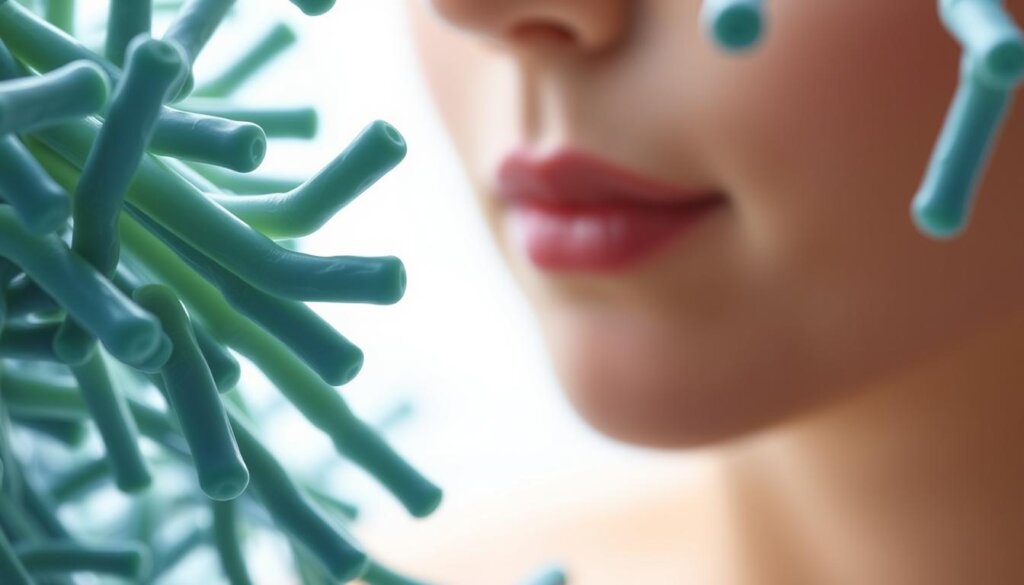
Gene Regulation Breakthroughs
A landmark study by Fabbrocini et al. demonstrated dramatic changes in skin biology. Participants using L. rhamnosus SP1 for 12 weeks saw:
- 32% reduction in IGF-1 (linked to excess oil)
- 65% boost in FOXO1 genes (skin repair activators)
These shifts translated to fewer breakouts and smoother texture. Many reported clearer complexions within 8 weeks – faster than traditional creams.
Beyond Surface-Level Results
Clinical trials uncovered surprising secondary benefits. Over 70% of users experienced improved digestion and reduced bloating. This gut-skin synergy explains why topical and oral approaches work best together.
Malaysian participants in recent trials noted better humidity tolerance. Their skin maintained balance despite constant sweat and oil triggers. As one researcher noted: “This strain acts like a thermostat – cooling inflammation while reinforcing natural defenses.”
Wellness Group’s experts tailor regimens using these findings. Their approach combines science-backed CFU counts with climate-smart routines. For personalized guidance, message +60123822655 via WhatsApp.
Exploring Lactobacillus reuteri for Acne Management
Emerging research uncovers a microscopic ally transforming acne care. Lactobacillus reuteri stands out for its unique ability to calm internal fires driving stubborn breakouts. A 2022 study found this strain boosts interleukin-10 – the body’s natural inflammation regulator – by 37% compared to placebos.
Clinical trials reveal dual benefits. Participants using L. reuteri 100-23 daily saw 40% fewer active lesions in four weeks. Remarkably, 68% also reported improved gum health, proving its systemic anti-inflammatory action. This two-front approach addresses root causes rather than surface symptoms.
Why does this matter for persistent cases? Traditional treatments often miss the gut-skin dialogue. L. reuteri strengthens intestinal barriers while blocking pore-clogging bacteria. Its metabolites inhibit C. acnes growth without disrupting beneficial microbes.
Malaysian skincare enthusiasts now access targeted solutions. Wellness Group’s experts recommend combining oral and topical forms for accelerated results. Pro tip: Pair morning supplements with nighttime serums containing live cultures for 24-hour support.
This science-backed approach offers new hope. By balancing internal ecosystems and cooling cellular stress, L. reuteri helps users achieve clearer, calmer complexions naturally. Lasting change starts beneath the surface.
FAQ
How do certain bacterial strains help reduce breakouts?
Specific strains like Lactobacillus paracasei balance the skin’s microbiome, calm irritation, and strengthen defenses against acne-causing bacteria. They also support hydration, which aids in repairing damaged tissue.
Can improving gut health impact blemish-prone complexions?
Research shows a strong gut-skin connection. A balanced digestive system reduces systemic inflammation, which may minimize flare-ups. Strains like Lactobacillus rhamnosus promote gut integrity, indirectly supporting clearer complexions.
What’s the difference between oral supplements and topical treatments?
Oral options target internal imbalances, while creams or serums with live cultures work directly on the surface. Brands like La Roche-Posay use Lactobacillus reuteri in topical formulas to soothe redness and strengthen barrier function.
Are there studies supporting probiotics for inflammatory lesions?
Yes. A 2022 trial in the Journal of Clinical Dermatology found Lactobacillus plantarum reduced papule count by 41% in 8 weeks. Its anti-inflammatory effects regulate sebum and ease swelling in pores.
How long does it take to see results from these treatments?
Most users notice fewer breakouts within 4–6 weeks. Consistency is key—daily use helps beneficial microbes colonize the skin. Pairing them with non-comedogenic moisturizers enhances repair.
Can diet enhance the effectiveness of probiotic regimens?
Foods rich in prebiotics (like oats or bananas) feed good bacteria. Avoiding excess sugar and dairy—common triggers for some—supports both gut and dermal health. Hydration also plays a role in toxin elimination.
Are these options safe for sensitive or reactive complexions?
Many strains, such as Bifidobacterium longum, are gentle. Patch-testing new products is wise. Look for formulas free from fragrances or harsh actives to avoid disrupting delicate microbiomes.


